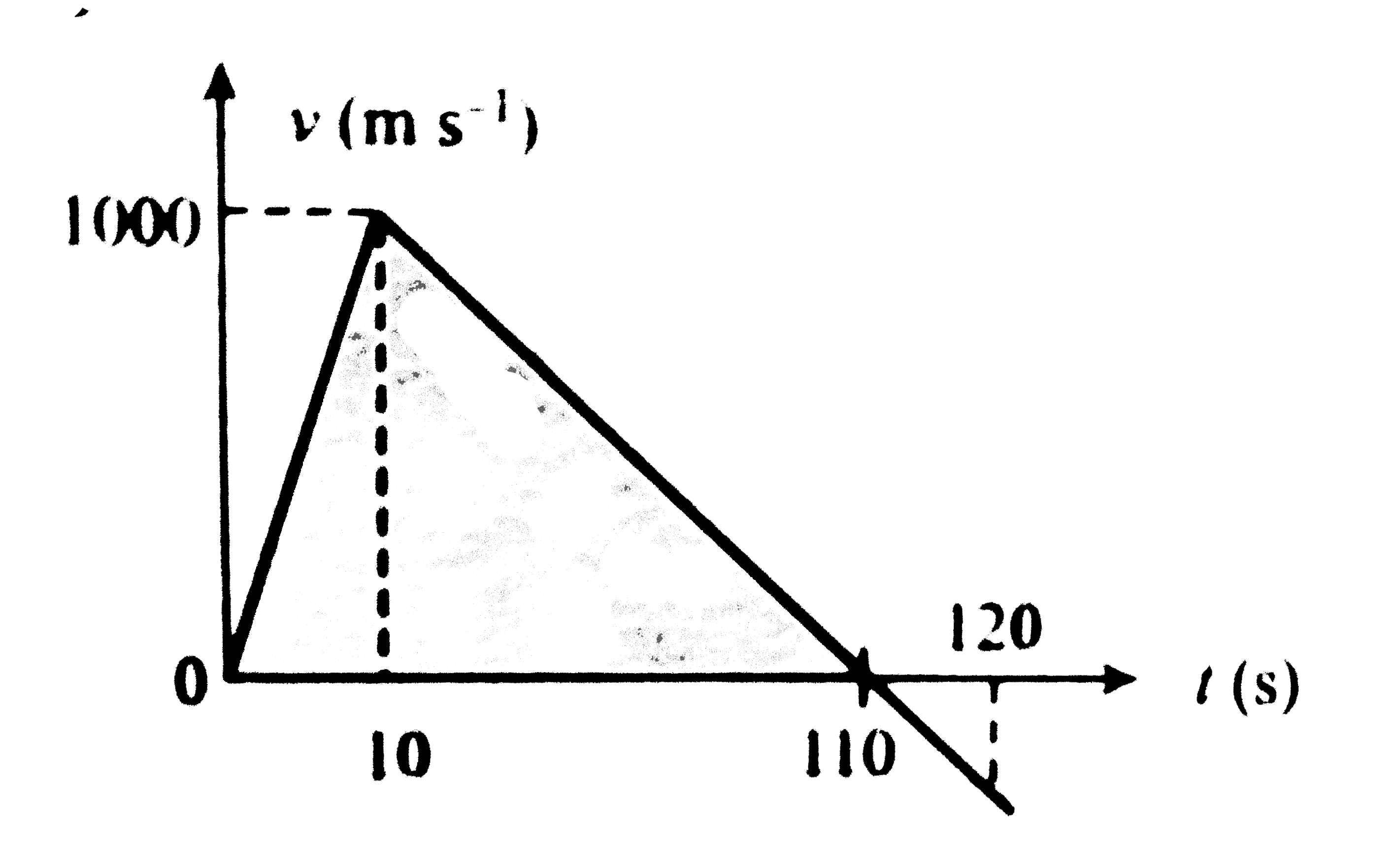In the previous question, the mean velocity of the rocket reaching the maximum height is :
The correct Answer is:200m,vboat=1.20km/hr,vwater=0.72km/hr,
To solve the problem of finding the mean velocity of the rocket reaching the maximum height, we can follow these steps:
1. Identify the Displacement:
The displacement when the rocket reaches its maximum height is given as hmax=60 kilometers.
To convert this into meters, we use the conversion factor 1 km=1000 m:
hmax=60 km×1000 m/km=60000 m
2. Determine the Time Taken:
From the graph mentioned in the transcript, we know that the time taken to reach the maximum height is t=120 seconds.
3. Calculate the Mean Velocity:
The mean velocity (vavg) can be calculated using the formula:
vavg=DisplacementTime
Substituting the values we have:
vavg=60000 m120 s
4. Perform the Calculation:
Now, we can simplify the calculation:
vavg=60000120=500 m/s
5. Conclusion:
Therefore, the mean velocity of the rocket reaching the maximum height is 500 m/s.
Final Answer:
The mean velocity of the rocket reaching the maximum height is 500 m/s.
The displacement when the rocket reaches its maximum height is given as hmax=60 kilometers.
To convert this into meters, we use the conversion factor 1 km=1000 m:
hmax=60 km×1000 m/km=60000 m
From the graph mentioned in the transcript, we know that the time taken to reach the maximum height is t=120 seconds.
The mean velocity (vavg) can be calculated using the formula:
vavg=DisplacementTime
Substituting the values we have:
vavg=60000 m120 s
Now, we can simplify the calculation:
vavg=60000120=500 m/s
Therefore, the mean velocity of the rocket reaching the maximum height is 500 m/s.
The mean velocity of the rocket reaching the maximum height is 500 m/s.
Topper's Solved these Questions
- BOOK - ALLENCHAPTER - MOTION IN A PALNEEXERCISE - Exercise-04[B]14videos
MOTION IN A PALNE
- BOOK - ALLENCHAPTER - MOTION IN A PALNEEXERCISE - Exercise-05 [A]11videos
MOTION IN A PALNE
- BOOK - ALLENCHAPTER - MOTION IN A PALNEEXERCISE - Comprehension#73videos
MOTION IN A PALNE
- BOOK - ALLENCHAPTER - KINEMATICS-2DEXERCISE - Exercise (O-2)46videos
KINEMATICS-2D
- BOOK - ALLENCHAPTER - NEWTON'S LAWS OF MOTION & FRICTIONEXERCISE - EXERCISE (JA)4videos
NEWTON'S LAWS OF MOTION & FRICTION
Similar Questions
Knowledge Check
- Question 1 - Select One
A toy rocket is fired from ground level. The height of the rocket with respect to time can be represented by a quadratic function. If the toy rocket reaches a maximum height of 34 feet 3 seconds after it was fired, which of the following functions could represent the height, h, of the rocket t secnds after it was fired ?
Ah(t)=−16(t−3)2+34Bh(t)=−16(t+3)2+34Ch(t)=16(t−3)2+34Dh(t)=16(t+3)2+34
In the previous question, if the pitch of the helical path is equal to the maximum distance of the particle from the x-axis
View SolutionIn the previous question, find maximum velocity and maximum acceleration.
View SolutionThe follwing graph shows the variation of velocity of a rocker with time. Then the mximum height attained by the rocket is.
 .View Solution
.View SolutionA body thrown up with a velocity reaches a maximum height of 50 m. Another body with double the mass thrown up with double the initial velocity will reach the maximum height of
View SolutionAn object is thrown vertically upward with a speed of 30 m/s. The velocity of the object half-a-second before it reaches the maximum height is
View SolutionA cricket player throws the ball to have the maximum horizontal range of 120m. If the throws the ball vertically with same velocity what is the maximum height it can reach ?
View SolutionA ball is projected vertically upward with speed of 50 m/s. Find a. the maximum height, b. the time to reach the maximum height, c. the speed at half the maximum height. Take g=10ms2.
View Solution

